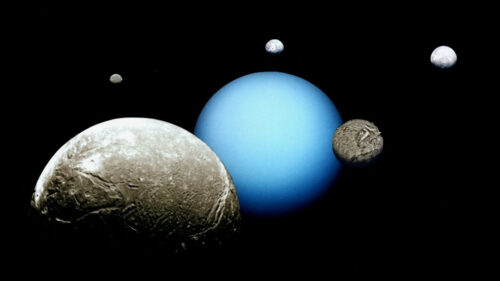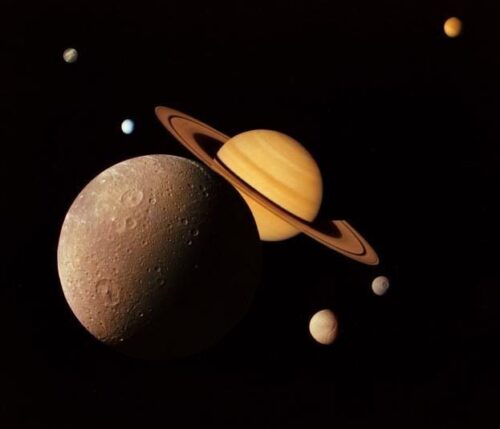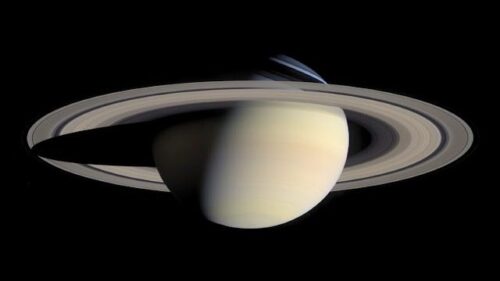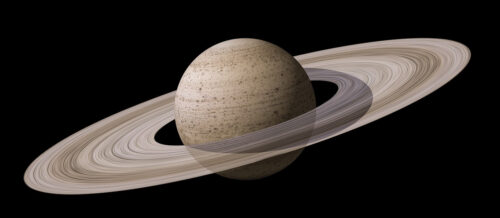
Saturn, the sixth planet in our solar system, has astounded scientists by revealing the presence of 62 previously undiscovered moons.
This remarkable discovery, announced by The University of British Columbia, propels Saturn to the forefront as the planet with the most moons in the Milky Way.
With a total of 145 moons, surpassing Jupiter’s 95, Saturn’s celestial companions are captivating astronomers worldwide.
Driven by meticulous research and innovative techniques, a team of international astronomers has unveiled a wealth of new insights into Saturn’s celestial neighborhood, revolutionizing our understanding of the planet’s captivating moon system.
Jupiter’s reign as the “Most Moon-Haver” in the solar system has come to an end, as Saturn claims the title with its newly discovered moons.
The painstaking efforts of astronomers from various nations have led to the identification of a staggering 62 moons orbiting Saturn.

This extraordinary number sets Saturn apart, not only as the mooniest planet in our solar system but also as the first planet to boast over 100 moons.
The awe-inspiring nature of Saturn’s moon system is now unraveled, captivating scientists and igniting further exploration into the enigmatic world of celestial satellites.
The discovery of Saturn’s newfound moons is the result of two decades of diligent research. Astronomers, including Dr. Edward Ashton from The University of British Columbia, have persistently scanned Saturn’s surroundings for moons, refining their search techniques over time.
Employing a novel “shift and stack” approach, Dr. Ashton’s team successfully detected smaller moons hidden within Saturn’s orbit.
This innovative technique, previously applied to Neptune and Uranus, involved combining sequential images to enhance signals and reveal faint moons.
By employing this method, the team unveiled moons as small as 2.5 kilometers in size, shedding light on Saturn’s diverse lunar family.

Identifying a celestial object as a moon requires meticulous tracking over several years to establish its consistent orbit around the planet.
Dr. Ashton and his team meticulously matched objects detected on different nights over a two-year period, ensuring the confirmation of 63 previously unknown moons encircling Saturn.
This rigorous process provided the necessary data to distinguish moons from other celestial objects, such as passing asteroids.
With their perseverance and dedication, the team unveiled a host of newfound moons, expanding our knowledge of Saturn’s captivating lunar system.
All 62 newly discovered moons orbiting Saturn fall into the category of irregular moons. These unique moons exhibit larger and more inclined orbits compared to regular moons, often taking elliptical paths.
Fascinatingly, irregular moons tend to cluster together based on the tilt of their orbit. Saturn boasts three distinct groups: the Inuit group, the Gallic group, and the populous Norse group.

This revelation not only deepens our understanding of Saturn’s moon system but also sparks intrigue, evoking images of space Vikings, reminiscent of popular culture references.
Saturn’s astonishing revelation of 62 new moons challenges our understanding of the celestial neighborhood within our Milky Way.
Through tireless research and innovative techniques, scientists have unveiled an array of hidden lunar treasures, pushing Saturn to the forefront as the planet with the most moons in our solar system.

This remarkable discovery propels us further into the captivating world of Saturn’s moons, inviting us to explore and unravel the mysteries that lie within this awe-inspiring celestial realm.
